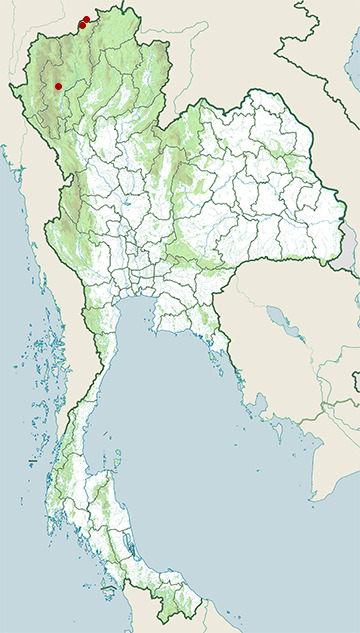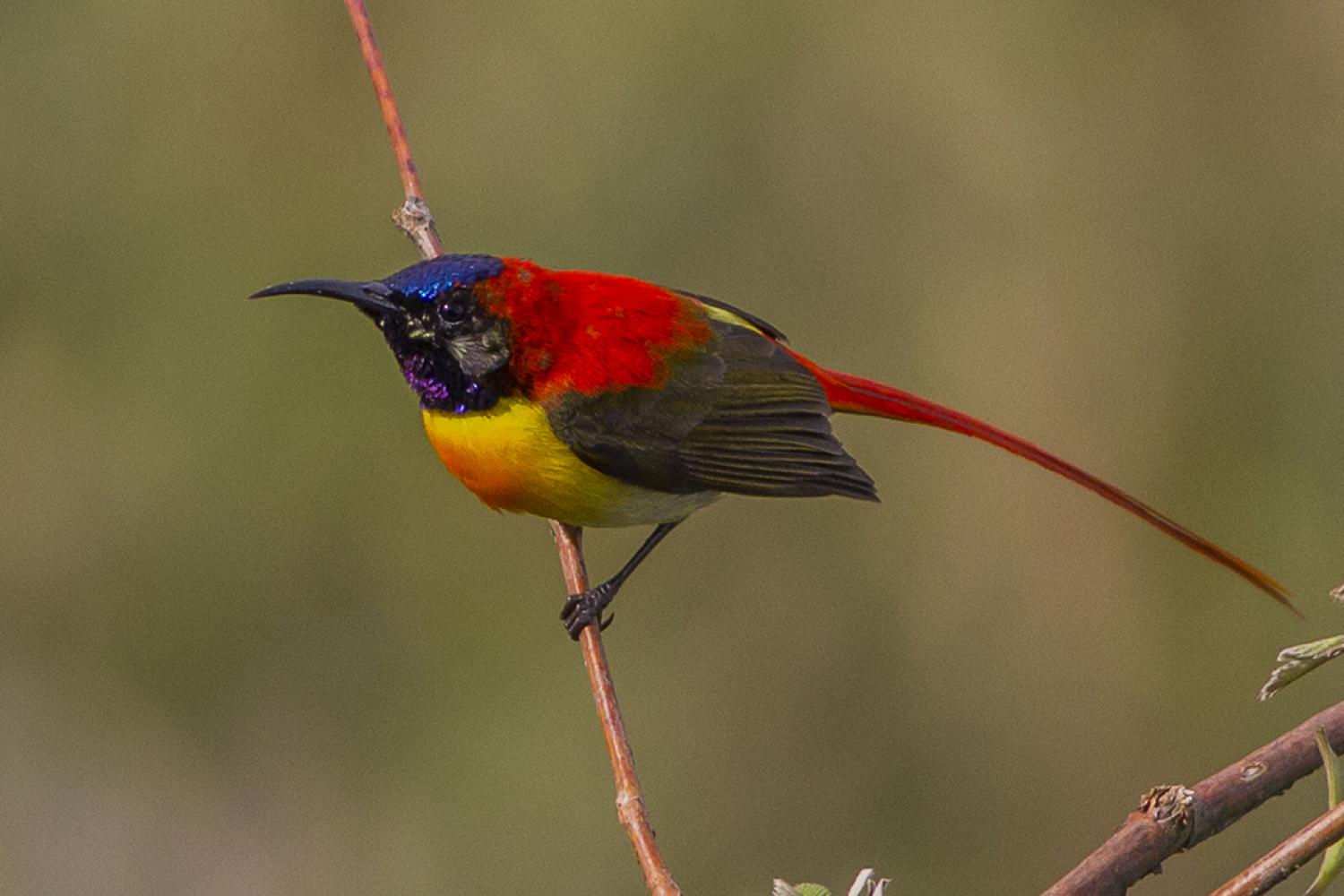Species of Thailand
Fire-tailed sunbird
Aethopyga ignicauda
Brian Houghton Hodgson, 1837
In Thai: นกกินปลีแดงหัวไพลิน
The fire-tailed sunbird (Aethopyga ignicauda) is a species of sunbird in the family Nectariniidae.
It is found in the northern parts of the Indian subcontinent, primarily in the Himalayas, and also in some adjoining regions in Southeast Asia. The species occurs in Bangladesh, Bhutan, India, Myanmar, Nepal, Thailand and Tibet.
Its natural habitats are temperate forests and subtropical or tropical moist montane forests.
Males reach a length of 15 cm. including their long tail; females are about two-thirds that length. They live in conifer forests at altitudes up to 4, 000 meters, descending into the valleys during the cold season. They eat insects, and also nectar. Both parents take part in feeding the young.
This article uses material from Wikipedia released under the Creative Commons Attribution-Share-Alike Licence 3.0. Eventual photos shown in this page may or may not be from Wikipedia, please see the license details for photos in photo by-lines.
Category / Seasonal Status
BCST Category: Recorded in an apparently wild state within the last 50 years
BCST Seasonal status: Non-breeding visitor
Scientific classification
- Kingdom
- Animalia
- Phylum
- Chordata
- Class
- Aves
- Order
- Passeriformes
- Family
- Nectariniidae
- Genus
- Aethopyga
- Species
- Aethopyga ignicauda
Common names
- Thai: นกกินปลีแดงหัวไพลิน
Conservation status

Least Concern (IUCN3.1)
Photos
Please help us review the bird photos if wrong ones are used. We can be reached via our contact us page.
Range Map

- Doi Inthanon National Park
- Doi Lang
- Doi Pha Hom Pok National Park

